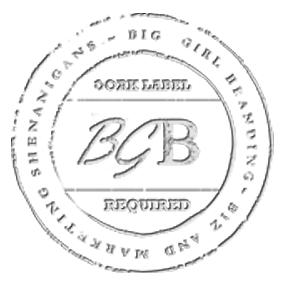Howdy BGB’ers.. this is a guest post by Christian Arno on a topic not yet covered on BGB… international branding.
I’ll be honest and say it wasn’t something I was thinking of when I started BGB and it’s possible it’s not something you’ve thought of either when branding your business.
However he nailed home some important points, so read and implement if it’s your thang BGB’ers. And do make the man feel welcome will ya? 😉
Is this something you should be considering before launching your branding efforts? Or is it something you didn’t consider before but now wish you did? Spill it in the comments below.
In this globalized age we live in, it’s possible to do business with anyone from Bangor to Bangkok. E-commerce is already well established in North America and Western Europe, but the emerging markets are fast-growing too.
For example, in Turkey, where ADSL was introduced as early as 2003, around half of the population is online, while in India use of the Internet has doubled since 2007.
But when it comes to selling online, it’s not as simple as marketing one message to everyone. Cultural understanding can make or break a brand.
Cultural faux pas or clumsy interpretations can damage the image of a brand irreparably – only tailored branding to suit that particular country and culture will properly ‘speak’ to the customer.
If you want to market your brand internationally, then think global from the very start and bear these points in mind…
Have You Heard the Word?
Traditionally, Western brands have gone for familiar, local-sounding names for their favourite products – think of Uncle Ben’s or Kentucky Fried Chicken.
Nowadays, if brands want to move across borders then they need their name to make sense across cultural and linguistic divides. Cleaning product brand Jif made no bones about the fact that they had to change their name to Cif due to the difficulties their Eastern European consumers had with the letter ‘J’.
In fact, they based a whole new marketing campaign around it.
Different branding can be important for product names in different territories. For instance, in the US consumers traditionally prefer evocative names for products, like Ford’s Mustang, whereas in Asia numerical product names are preferred, as in Sony’s camera range.
The jury is still out on dual branding. In the UK Walkers and Vauxhalls are the same cars as the European Continent’s Lays and Opels, bar the names. But this kind of inconsistency can cause brand confusion for consumers, so it’s worthwhile deciding upon an international brand name at the outset.
This is where the assistance of localization experts can be crucial – you don’t want to end up naming your product a word that is rude, contradictory or foolish in another language!
This is particularly applicable to slogans and phrases – the cultural connotations of direct translations can be disastrous. Allegedly, American Airline’s ‘Fly In Leather’ slogan translated to ‘vuela en cuero’ or ‘Fly Naked’ in Mexican Spanish, whilst further afield, in China KFC urged consumers to ‘Eat Your Fingers Off’ instead of their otherwise successful slogan ‘Finger Lickin’ Good’!
Do Your Cultural Research
Every brand has its message and buzz concepts. Let’s look, for instance, at Apple. Apple’s marketing subliminally tells its customers that they are technologically-savvy, up-to-the-minute, busy and vivacious people.
Now, a person could be all of these things, whether they live in London, Lebanon or Lima. If the branding embodies something more specific, such as ‘economic’ or ‘affordable’, this could strengthen the brand in some countries, yet equally turn other markets off.
For example, consumer research in China shows that the majority of online shoppers will invariably go for the least expensive option when faced with a range of similar products, whereas in the Gulf states the perceived luxury of a brand, rather than the price, will be the motivating factor for purchase.
The key is to do your market research before launching your product and tweaking your branding, and price, accordingly.
Of course, taking care with the translation of your marketing collateral for foreign markets applies to more than just the brand name, slogan and packaging. Your translated website content should also be localized by native speakers, as should your content for social media marketing.
But with a bit of local advice and some international domain names, there’s nothing standing between you and an international audience of 2 billion consumers – as long as you take the time and effort to speak their language.
Like-y this post? Feel free to share it, bookmark it, and in general ho it out. BGB thanks you kindly.

